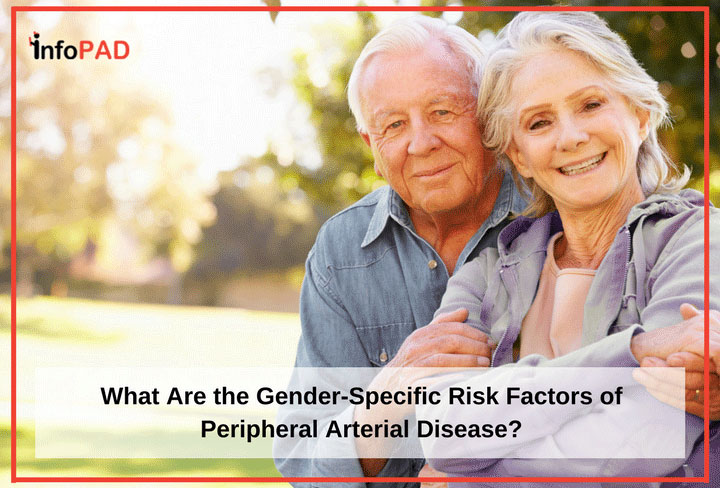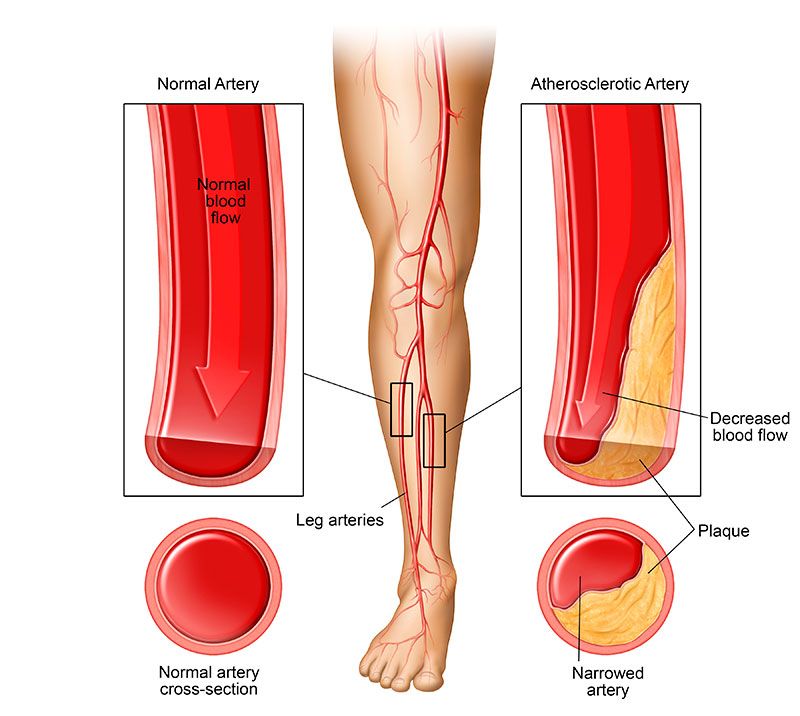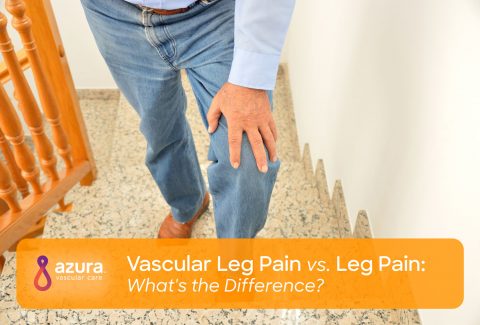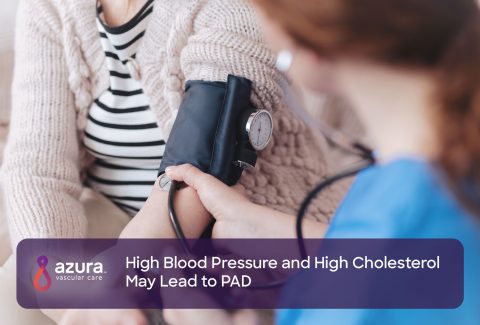
Regardless of whether you’re male or female, if you’re age 50 or older, you have a risk of developing peripheral arterial disease (PAD) – and your risk factors for peripheral arterial disease increases substantially if you have a history of smoking, high blood pressure or high cholesterol.i
PAD is a serious but common condition that’s estimated to affect one out of every five people over the age of 65 in the United States.ii Knowing the risk factors for peripheral arterial disease is important in preventing and treating PAD, since the disease is progressive and becomes more serious over time.
PAD occurs when plaque (fat and cholesterol) builds up in the arteries of your extremities. PAD usually affects your legs, but sometimes it occurs in the arms. As plaque builds up, the arteries become blocked, and blood flow to your extremities is reduced, often causing pain and discomfort – but not everyone with PAD experiences pain.

Some people with PAD, particularly women, have no symptoms at all.iii But when women do have PAD symptoms, they’re similar to the symptoms men have. The disease is non-discriminatory, affecting both men and women every day.
Gender-Specific Risk Factors for Peripheral Arterial Disease
Risk Factors for Peripheral Arterial Disease in Men

There are several risk factors that men should be aware of. Research shows that the major risk factors for PAD in men are:
- Smoking
- High blood pressure
- High cholesterol
- Type 2 diabetesiv
Risk Factors for Peripheral Arterial Disease in Women
One recent study that looked at gender-specific risk factors for PAD concluded that women share three major risk factors with men:
- High blood pressure
- High cholesterol
- History of smokingvi
In addition, this study also found that women with PAD are more likely to suffer from depression. This discovery led researchers to conclude that depression could potentially be a risk factor for women in the development of PAD.vi
PAD and Women
Functional decline can be greater in women with PAD than in men with the disease.iii
Early screening for PAD is crucial, especially for women, since many do not experience pain or other symptoms. Therefore, women who have any of the major risk factors for peripheral arterial disease, such as a history of smoking, high blood pressure or high cholesterol, are encouraged to undergo ABI testing.
PAD Linked to Dads
Another interesting gender-specific association was identified in a 2014 observational study of over 4,500 patients with symptoms of vascular disease. This study concluded that patients with symptoms of vascular disease whose fathers had PAD were at an increased risk of developing peripheral arterial disease themselves.ii
The Takeaway
Even though data is still inconclusive in terms of gender-specific risk factors for peripheral arterial disease, a few studies have shown:
- PAD is common in both men and women, but it’s now becoming better understood and accepted that more women than once thought suffer from PAD
 Men and women share many risk factors for PAD, including:
Men and women share many risk factors for PAD, including:
- A father who had PAD
- History of smoking
- High cholesterol
- High blood pressure
- Depression may be a risk factor for women in the development of PAD
RELATED: 8 Ways to Tell if You Are at Risk for Peripheral Artery Disease
Whether you’re male or female, for many people, a PAD diagnosis can be a life-altering experience. You may be scared or overwhelmed when you are diagnosed, but it’s important to keep in mind that there are many lifestyle changes that have proven to be effective in treating PAD. And if simple changes to your daily habits don’t help enough, there are several minimally invasive PAD treatment options available that you can discuss with your doctor.
Sources:
i National Institutes of Health. National Heart, Lung, and Blood Institute. About P.A.D. Retrieved from: https://www.nhlbi.nih.gov/health/educational/pad/about/index.html
ii Weijmans M. “Parental history and the risk of subsequent vascular events in patients with clinically manifest vascular disease: the effects of sex of the parent and vascular disease location.” 2014.m234(1):129-35. https://www.ncbi.nlm.nih.gov/pubmed/24650753
iii Hirsch, A.T., Allison, M.A., Gomes, A.S., Corriere. M.A., Duval, S., Ershow, A.G., Hiatt, W.R., Karas, R.H., Lovell, M.B., McDermott, M.M., Mendes, D.M., Nussmeier, N.A., Treat-Jacobson. D. (2012) A call to action: Women and peripheral artery disease: a scientific statement from the American Heart Association. Circulation. Doi: 10.1161/CIR.0b013e31824c39ba.
iv Joosten, M. M., Pai, J. K., Bertoia, M. L., Rimm, E. B., Spiegelman, D., Mittleman, M. A., Mukamai, K. J. (2012). Associations between Conventional Cardiovascular Risk Factors and Risk of Peripheral Artery Disease in Men. Journal of the American Medical Association, 308(16), 1660–1667.
v Hiramoto, J. S., Katz, R., Weisman, S., Conte, M. (2014). Gender?Specific Risk Factors for Peripheral Artery Disease in a Voluntary Screening Population. Journal of the American Heart Association, 3(2)
vi Cohen, B. E., Smolderen, K., Vittinghoff, K., Whooley, M. A., Hiramoto, J. (2014) Peripheral arterial disease, gender, and depression in the Heart and Soul Study. Journal of Vascular Surgery. DOI: http://dx.doi.org/10.1016/j.jvs.2014.02.013


